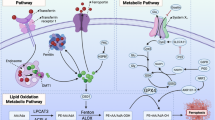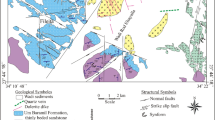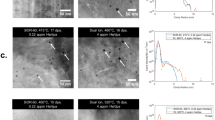Abstract
THE site of attack by OH radicals on the various components of some cell nuclei has been explored using the radiation-induced carboxylation technique recently described1. This involves irradiation of oxygen-free suspensions of the nuclei in the presence of sodium bicarbonate, under conditions where the radicals can react with the nuclear constituents. The negative polarons2, (H2O)− produced from the water react with the bicarbonate according to : 
Similar content being viewed by others
Article PDF
References
Scholes, G., Simic, M., and Weiss, J., Nature, 188, 1019 (1960).
Hayon, E., and Weiss, J., Proc. Second Intern. Conf. Peaceful Uses of Atomic Energy, Geneva, 29, 80 (1958). Weiss, J., Nature, 186, 751 (1960).
Dounce, L., in The Nucleic Acids, edit. by Chargaff, E., and Davidson, J. N., 2, 93 (Academic Press, Inc., New York, 1955).
Author information
Authors and Affiliations
Rights and permissions
About this article
Cite this article
SCHOLES, G., WEISS, J. & WHEELER, C. Action of Ionizing Radiation on Rat Liver Cell Nuclei. Nature 195, 802 (1962). https://doi.org/10.1038/195802a0
Issue date:
DOI: https://doi.org/10.1038/195802a0



